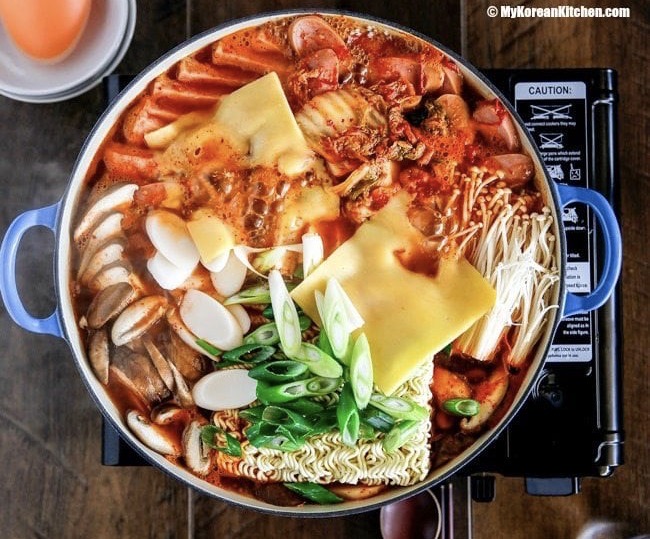What is Budae-jjigae?
- It is a Korean spicy stew created during post-Korean War period
- “Budae” means troop, military camps or army base in Korean, and “jjigae” means stew, so the dish is sometimes called “Army Base Stew”
- It can also be called “Jonseun-tang”, which means “Johnson-soup” in Korean. It is named after the U.S. president Lyndon B. Johnson, who loved this dish when he visited Korea.
What is a Budae-jjigae made of?
- Gochujang (Korean Chili Paste)
- Instant Noodles
- Spam
- Sausages
- Kimchi
- Scallions
- Tofu
- Cheese
History of Budae-jjigae
- Food was scarce in South Korea after the Korean War, and Korean who lived near the U.S. army bases areas found surplus foods such as spam and sausages, which are mostly preserved meat.
- Korean who craved for meat after war, decided to cook those surplus foods from the army bases with gochujang, and added whatever ingredients they have left to the stew, such as tofu and instant noodles.
- People at the time loved this dish so much because of the taste of the preserved meat. The dish is still very popular nowadays.
- One of the U.S. army bases areas, Uijeongbu, was where budae-jjigae originated from. Later in the 20th century, City of Uijeongbu told people to stop using the name of budae-jjigae, and use Uijeongbu-jjigae instead in order to war-time connotation. But not many people followed the rule since the name of “Budae-jjigae” is already very well-known.

References: https://en.wikipedia.org/wiki/Budae-jjigae#cite_note-KFF-4 http://www.hansik.org/en/board.do?cmd=view&bbs_id=211&menu=PEN3020000&lang=en&art_id=37033 https://www.theguardian.com/travel/2016/jun/19/south-korea-foodie-spam-stew-seoul https://i.ytimg.com/vi/yTl7oixFACY/maxresdefault.jpg https://korean.kitchen/wp-content/uploads/2016/08/budae-jjigae-main.jpg


Seeing that all of these ingredients are at hand, guess what I’ll be having for lunch!